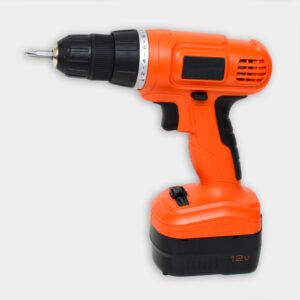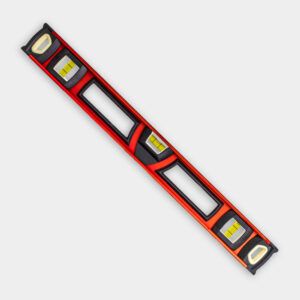Project details
Skill
Cost
Estimated Time
A sliding barn door can add a stylish and functional element to your home while making the most of your space. This DIY project is an excellent way to create privacy between rooms or cover up an open doorway in just a few hours. In the video, This Old House carpenter Nathan Gilbert demonstrates how to install a sliding barn door in a bedroom to separate it from an ensuite bathroom. Remember to measure carefully, account for any wall irregularities, and get help when hanging the door for a safe and successful installation.
Choose the Right Sliding Barn Door
Make sure you choose the right door for your home’s style and measurements:
- Size: Measure the width of your doorway and add at least 2 inches on each side for proper coverage.
- Style: Choose a design that complements your home’s aesthetic, such as rustic wood or modern metal.
- Hardware finish: Select hardware that matches your existing fixtures and decor.
- Weight: Make sure the track and roller system is strong enough to hold the door.
Double-check that your sliding barn door kit has all the necessary components, such as the door slab, mounting hardware, and floor guide. Some kits, including the one Gilbert uses, come with pre-drilled holes for easy installation.
Materials and Tools
To hang a sliding barn door, you’ll need the following materials and tools:
Materials:
- Sliding Barn Door kit
- Wood stain or paint (if desired)
- 4-inch structural screws
- Additional 3/4-inch stock (if needed for wall irregularities)
- Rags for stain application
In this video, Gilbert installs the Z-Bar Knotty Alder Wood Interior Sliding Barn Door Slab with Hardware Kit, which can be found at The Home Depot. He adds a 3/4 inch stock in this application because the wall was not plumb and the kit door would have hit the baseboard.
Tools:
- Cordless drill/driver
- Level
- Socket wrench
- Latex gloves
- Pencil
- Tape measure
- Sandpaper or sanding block
- Stud finder
Steps for Installing a Sliding Barn Door
Step 1: Prepare the Door
Here’s how to paint and customize your new sliding door before you hang it up:
- Inspect the door for any imperfections or rough spots, and sand them if necessary.
- Clean the door completely to remove any dust or debris.
- Apply the wood stain or paint of your choice. Gilbert recommends using a water-based stain for quick drying and minimal odor.
- Allow the finish to dry completely before you install the door.
Step 2: Install the Mounting Board
Follow these steps to install the mounting board properly:
- Locate the wall studs using a stud finder and mark their positions.
- Measure and cut the mounting board to the appropriate length, and make sure it extends beyond the door opening on both sides.
- Pre-drill holes in the mounting board at the stud locations.
- Hold the mounting board in place and use a level to keep it straight.
- Secure the board to the wall using 4-inch structural screws, starting with one screw and checking for level before fully tightening all screws.
In the video, Gilbert notes that the homeowner’s wall is out of plumb by about 3/4 inch. To compensate for this, he adds an additional 3/4-inch stock to the mounting board so the door will clear the baseboards or trim.
Step 3: Attach the Track Hardware
With the mounting board in place, install the track hardware:
- Position the track on the mounting board, making sure it’s centered and level.
- Mark the locations for the mounting holes.
- Pre-drill holes for the lag bolts.
- Attach the track to the mounting board using the provided lag bolts and spacers.
- Tighten the bolts loosely, then fully tighten them once all are in place using a wrench.
- Slide the stops onto the mounting hardware to keep the door from sliding off the rail.
Make sure to double-check your measurements and levels to avoid future adjustments or having to redrill holes.
Step 4: Hang the Door
Now that the track is installed and the stain is dry, you can hang the door:
- Attach the roller hardware to the top of the door using the pre-drilled holes.
- Attach the door handle at a comfortable height, typically around 32 inches from the floor.
- With a helper, lift the door and carefully place the rollers onto the track.
- Slide the door back and forth to make sure it operates correctly.
- Adjust the roller hardware as needed to keep the door properly aligned.
Step 5: Install the Floor Guide and Stops
Install the floor guide and stop to keep the door from swinging in the opening:
- Close the door and position the floor guide at the bottom edge.
- Mark the location of the floor guide with a pencil.
- Remove the door temporarily and secure the floor guide to the floor using the provided screws.
- Rehang the door and check that it slides smoothly through the guide.
- Install the door stops on each end of the track to prevent the door from rolling off.
- Add the anti-jump blocks that come with the kit up top to prevent the door from sliding off the rail.
Step 6: Finishing Touches
To complete your sliding barn door installation:
- Add any decorative hardware or trim pieces to match your home’s decor.
- Double-check that all components are securely fastened and working correctly.
- Wipe the installation area clean.
Take Care of Your Sliding Barn Door
Here are a few tips to keep your new sliding barn door in good condition:
- Check the track and roller hardware often for tightness and make any necessary adjustments.
- Clean the track and rollers to remove any dirt or debris that may throw the door off the track.
- Lubricate the rollers periodically to reduce noise and friction.
- Inspect the door stops and floor guide for wear and alignment.
Troubleshooting Common Issues
Here are solutions to some problems you may have during installation:
- Door appears to sag: Check the roller hardware and mounting board for any loose screws or misalignments.
- Door doesn’t slide smoothly: Check that the track is level and the floor guide is aligned.
- Door hits the wall or trim: Adjust the door stops or add bumpers to protect the wall.
- Rollers make excessive noise: Lubricate the rollers or tighten any loose hardware.




